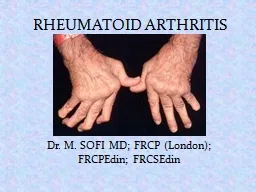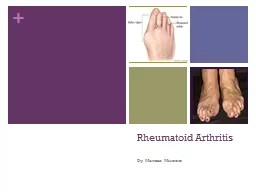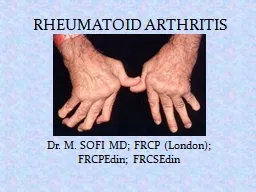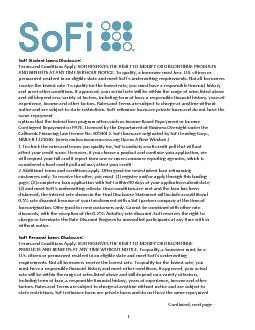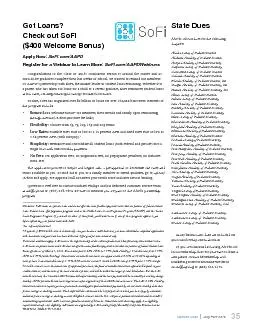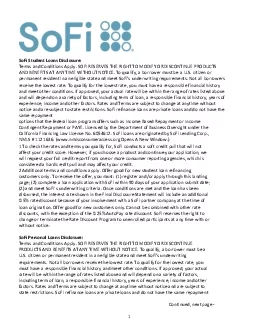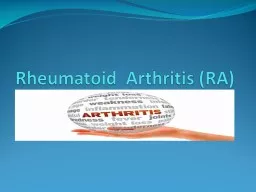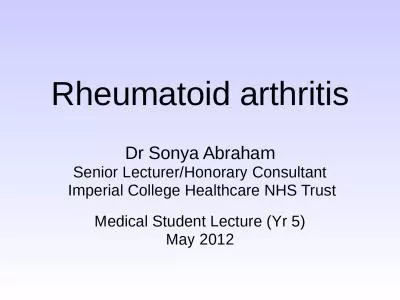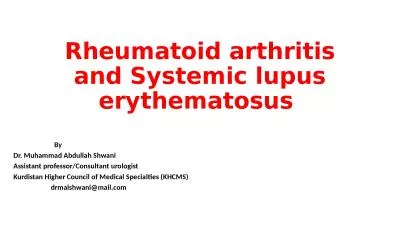PPT-RHEUMATOID ARTHRITIS Dr. M. SOFI MD; FRCP (London);
Author : faustina-dinatale | Published Date : 2020-04-04
FRCPEdin FRCSEdin A chronic progressive disease causing inflammation in the joints and resulting in painful deformity and immobility especially in the fingers
Presentation Embed Code
Download Presentation
Download Presentation The PPT/PDF document " RHEUMATOID ARTHRITIS Dr. M. SOFI MD; FR..." is the property of its rightful owner. Permission is granted to download and print the materials on this website for personal, non-commercial use only, and to display it on your personal computer provided you do not modify the materials and that you retain all copyright notices contained in the materials. By downloading content from our website, you accept the terms of this agreement.
RHEUMATOID ARTHRITIS Dr. M. SOFI MD; FRCP (London); : Transcript
Download Rules Of Document
" RHEUMATOID ARTHRITIS Dr. M. SOFI MD; FRCP (London); "The content belongs to its owner. You may download and print it for personal use, without modification, and keep all copyright notices. By downloading, you agree to these terms.
Related Documents

